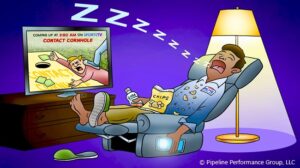I have been thinking for a few months about the porcupine predicament, as described by Arthur Schopenhauer, a German philosopher from the 19th century. In this time of social distancing and other precautions, I wonder how his parable applies to us today. Since the predicament is about the necessary space for porcupines to be comfortable, I wondered how it applies to people in control rooms also. I am used to providing one page articles, so this predicament will require several articles.
One cold winter’s day, a number of porcupines huddled together quite closely in order through their mutual warmth to prevent themselves from being frozen. But they soon felt the effect of their quills on one another, which made them again move apart. Now when the need for warmth once more brought them together, the drawback of the quills was repeated so that they were tossed between two evils, until they had discovered the proper distance from which they could best tolerate one another.
How close is your console to the adjacent one? Are you huddled closely together with other controllers? I was in a terminal control room this year and the two desks were within four feet of one another. Neither of the controllers had quills, but occasionally they would sling verbal barbs at one another. While it was all in good fun, I thought a little more distance might have been helpful to both individuals. Have you ever had a similar thought? There are times when we want the warmth of human interactions and there are definitely times when we do not. The last thing I wanted in the middle of a night shift was someone poking at me. What about you?
We have done pandemic related surveys in 2020-2021 as a free service to control rooms that wanted to see how the necessary changes affected their controllers. One of the findings was that it did not bother the majority of controllers that managers and support personnel were not physically present in the control room. The controllers were getting their needs met from a distance. Are there lessons to be learned for the future, in addition to the present time? Does this say anything about how we interact with one another in person? Do we consider the effects of our words and actions on others in our space?
Look around your control room or office space. When consoles, desks, offices, and/or cubicles were fitted into the spaces, what consideration was given to having the proper distance so that people could best tolerate one another? Most of the control rooms we see do not appear to consider the need for adequate space for those who are there 24-7-365. It appears the primary consideration is cramming as many consoles into the smallest area possible. I recall one control room where decisions were first made to ensure that managers had their offices and meeting rooms, and then the consoles were fitted into the remaining space. I am sure that controllers continually feel the effects of one another’s quills, but are not able to move apart.
You know there are human factors design standards for control rooms with recommended spacing of consoles and other ergonomic principles. Alas, sometimes people do not pay much attention to those recommendations. We do not always have that tolerable distance. Thus, we get the porcupine predicament in control rooms.
CRM and Philosophy | Charles Alday © 2021 Please Distribute to Others.




